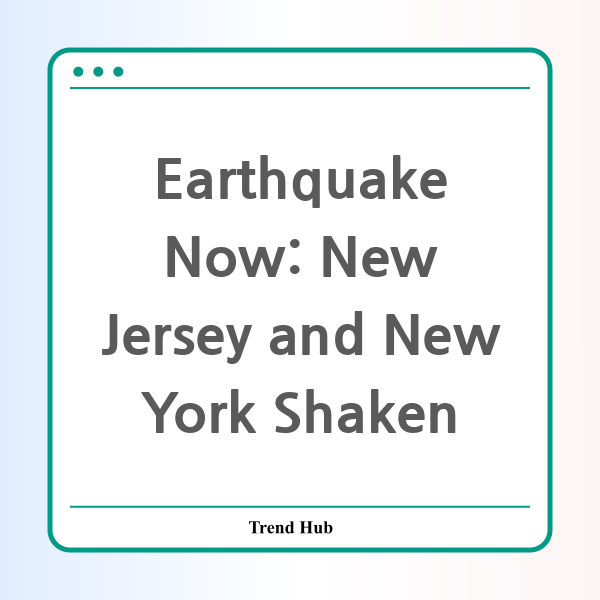* This website participates in the Amazon Affiliate Program and earns from qualifying purchases.

Have you ever wondered what it feels like to experience an earthquake, especially in places where such events are rare? Well, residents of New Jersey and New York got a taste of that sensation just recently when a small earthquake struck, causing a ripple of concern and curiosity.
On a seemingly normal Friday afternoon, just after 1 p.m., a magnitude 2.4 earthquake was recorded near Paramus, New Jersey. This quake, although mild by seismic standards, rattled houses and stirred a mixture of emotions among residents of the usually stable northeastern region. Reports flooded in from towns like Rochelle Park, New Milford, and Westwood, with locals sharing their reactions over social media and community forums.
Carmen Molina, a resident of Bergen County, described her experience, initially mistaking the tremor for a passing truck until her neighbors began texting and alerting others via local social media groups. Such feedback is vital as it highlights the communal aspect of experiencing unexpected natural phenomena. This quake came almost nine months after a more significant event—an earthquake of magnitude 4.8—which was notably the strongest in two centuries for New Jersey.
Earthquakes in the New York City area are not commonplace; however, they do occur. Most people in the region may go their entire lives without feeling one. Seismologists suggest that the geological makeup of the Northeast plays a role in how these events are felt. Unlike the West Coast, where mountainous terrain helps to absorb seismic waves, the less-disturbed, condensed grounds of the East allow quakes to be felt over a more expansive area. It’s a phenomenon that both fascinates and frightens residents.
The recent tremor, originating about a mile outside of Paramus and at a depth of approximately 7.7 kilometers (4.7 miles), was felt by over 740 individuals according to reports. People as far away as New Milford, Connecticut, and Yonkers, New York, noted they experienced light shaking. "I thought it was my washing machine acting up," commented a resident from Westchester County, illustrating the confusion such unexpected events can cause.
While no significant damage was reported from this latest earthquake, the seismic activity serves as a reminder of the potential for larger events. The glacial rebound theory, which posits that parts of the Northeast once covered by glaciers are now shifting, may be a factor contributing to this seismic activity. Meteorologists and geologists often look at these shifts to gauge future risks in a region that many assume is largely free from such natural disasters.
As we can see, whether it’s a minor shake or a stronger quake, the impact on a community can be significant. The fear and fascination surrounding earthquakes remind us of nature's unpredictable power and the importance of preparedness, even in the most unexpected places. As technology progresses, so does our ability to monitor these events and assess their risks, but for now, the best we can do is stay informed and be ready for the next surprise.
* This website participates in the Amazon Affiliate Program and earns from qualifying purchases.